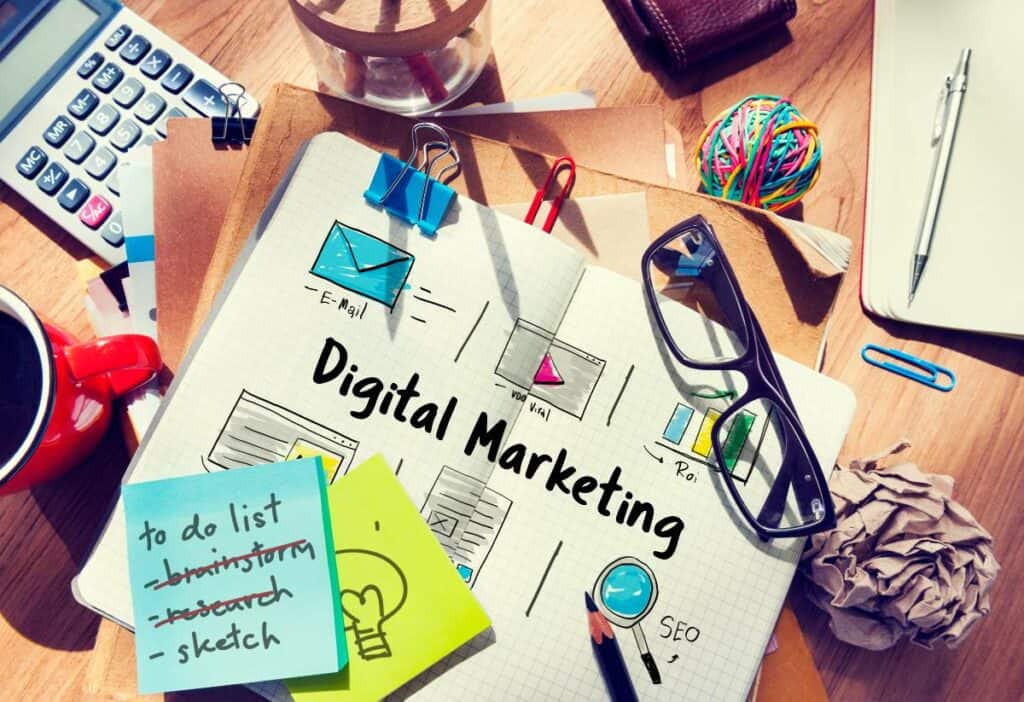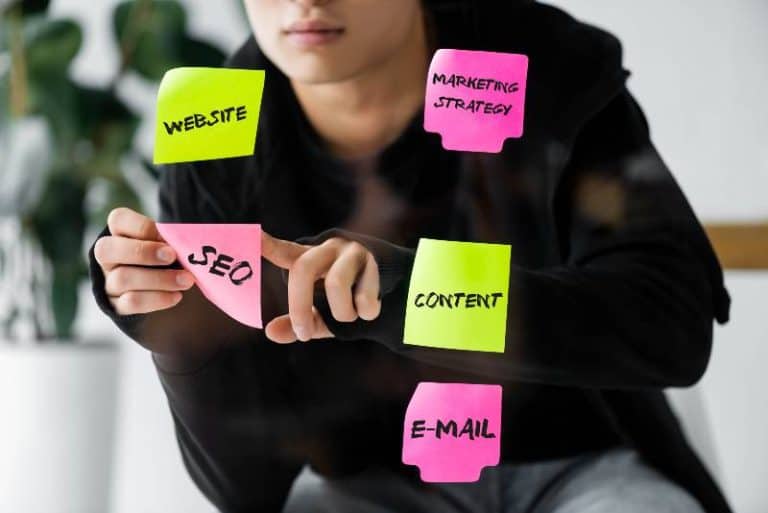As someone who’s been in the game since the days of dial-up modems (yes, I’m that young), I’ve seen my fair share of shifts in the digital landscape. But let me tell you, what’s happening now is nothing short of a revolution. So, grab your favorite caffeinated beverage, and let’s dive into why relying solely on Google is like bringing a knife to a gunfight – it might have worked once, but now you’re just asking for trouble.
Key Takeaways
- The digital marketing landscape is shifting away from click-based metrics and perfect attribution
- Success in 2024 requires embracing native content strategies and leveraging multiple platforms
- Balancing brand building with performance marketing is crucial for long-term success
The Inspiration Behind This Article
While crafting this piece, I came across a thought-provoking article by Rand Fishkin titled “Attribution is Dying. Clicks are Dying. Marketing is Going Back to the 20th Century.” Fishkin’s insights resonated with my own observations and experiences in the ever-evolving digital marketing landscape. His analysis serves as a springboard for our deep dive into why marketers need to look beyond Google in 2024 and beyond.
The Decline of Traditional Digital Marketing Metrics
Let’s start with a hard truth: those clickthrough rates and perfect attribution models we’ve been obsessing over?
They’re going the way of the dinosaurs. The death of clicks is upon us, folks. Remember when we used to celebrate every click like it was a mini-victory?
Well, those days are numbered. With the rise of zero-click searches and in-platform content consumption, clicks are becoming as rare as a unicorn sighting.
And don’t even get me started on attribution. Gone are the days when we could trace a customer’s journey from first touch to purchase with pinpoint accuracy. Between privacy laws, ad blockers, and multi-device journeys, attribution has become more of an art than a science. It’s like trying to solve a jigsaw puzzle with half the pieces missing and a blindfold on.
But here’s the real deal: zero-click content.
Google, in its infinite wisdom, is now answering queries right in the search results. Great for users, but not so great for our traffic stats.
Understanding the New Digital Ecosystem
So, if Google’s not the only game in town anymore, what does the new playing field look like? Picture this: social media platforms are no longer just for cat videos and political arguments. They’re full-fledged ecosystems with their own algorithms, content formats, and user behaviors. It’s like each platform is its own little universe, with its own laws of physics that we need to understand and navigate.
Content consumption habits have evolved too. People are snacking on short-form videos, binging podcasts, and getting their news from memes. It’s a brave new world out there, and if we’re not adapting, we’re falling behind.
And let’s not forget about privacy laws and ad blockers.
They’ve thrown a wrench in our tracking capabilities. It’s like trying to count fish in a river – you know they’re there, but good luck getting an exact number. We need to get comfortable with a little ambiguity and focus on the big picture rather than obsessing over every little data point in our SEO strategies.
The key here is adaptability in navigating the changing landscape of advertising platforms. We need to be where our audience is, speaking their language, and providing value in the formats they prefer. It’s not about shouting the loudest anymore; it’s about whispering in the right ear.
The Shift to Native Content and Platform-Specific Strategies
Now, let’s talk about the elephant in the room: native content. Each platform is like a different country with its own culture, language, and customs. You wouldn’t speak French in Japan, right? The same goes for your content strategy.
Platforms like Google and Facebook are incentivized to keep users on their turf.
They’re not your friendly neighborhood bulletin board anymore; they’re walled gardens. Creating platform-native content isn’t just a nice-to-have; it’s essential for visibility and engagement. Your message needs to shape-shift like a digital chameleon, adapting to each platform’s unique vibe.
Think of it like this: You’re not just a marketer anymore; you’re a polyglot content creator, fluent in the languages of Instagram, TikTok, LinkedIn, and beyond. It’s challenging, sure, but also incredibly exciting. Who doesn’t love a good challenge, right?

Strategies for Marketing Beyond Google
Alright, let’s get down to brass tacks. How do we actually do this whole “beyond Google” thing? First up, is social media marketing.
It’s time to get social, and I don’t mean just posting your lunch photos. TikTok, Instagram, LinkedIn – each has its own flavor and audience. TikTok is short, snappy, and addictive, perfect for reaching the younger crowd. Instagram is all about visual storytelling, great for lifestyle brands and B2C. And LinkedIn? That’s the suit-and-tie of social media, ideal for B2B and thought leadership.
But don’t stop there.
Video content is king, and YouTube isn’t just for cat videos anymore (though those are still great). Create how-to guides, behind-the-scenes peeks, and entertaining content that showcases your brand personality. And don’t forget about streaming services. Sponsored content on platforms like Netflix? It’s happening, folks, as programmatic advertising takes the forefront.
Audio is another frontier worth exploring. Podcasts and digital radio are booming. Start your own podcast or sponsor existing ones in your niche. It’s a great way to build authority and connect with your audience on a deeper level.
And let’s not forget about good old email marketing. Yes, it’s still alive and kicking! Personalize your emails based on user behavior and preferences. Use segmentation to ensure you’re sending the right message to the right people. It’s all about creating that one-to-one connection in a world of mass communication.
The goal here isn’t to abandon Google entirely. It’s about creating a diverse marketing ecosystem that can thrive with or without the search giant’s blessing. It’s like having a diversified investment portfolio – you’re spreading your risk across various marketing channels and maximizing your potential returns.
Harnessing the Power of Dark Social and Unattributable Traffic
Now, let’s talk about something a bit mysterious: dark social. No, it’s not the evil twin of regular social media. It’s all those shares and interactions that happen in private messages, emails, and chat apps.
Embracing the untrackable is key here. Accept that not everything can be measured with precision. Instead, focus on creating share-worthy content – stuff so good people can’t help but pass it along. It’s about creating a buzz, not just counting clicks.
Sure, you can use trackable links where possible to get some insights, but the real power lies in building a brand that people want to talk about, whether you can track it or not. It’s about becoming part of the conversation, not just interrupting it.
Measuring Success in the Attribution-Poor Era
So, if we can’t rely on our old metrics, how do we know if we’re winning? It’s time to get creative, folks. Lift-based measurement is one approach – looking at overall trends rather than individual touchpoints. It’s like judging the health of a forest instead of examining each tree.
Brand awareness metrics are also crucial. Track mentions, sentiment, and overall visibility. It’s less about direct conversions and more about building a presence that resonates with your audience over time.
And don’t forget about engagement rates. Focus on how people interact with your content across platforms. Are they commenting, sharing, saving? These actions might not lead to immediate sales, but they’re building a foundation for long-term success.
The trick is to zoom out and look at the bigger picture. It’s less about individual transactions and more about building a brand that resonates with your audience over time. It’s a marathon, not a sprint, and we need to adjust our measurements accordingly.
The Role of AI and Machine Learning in Modern Digital Marketing
Hold onto your hats, because AI is about to take us on a wild ride. In the world of Content creation and optimization are crucial for successful digital advertising., AI can help generate ideas, optimize headlines, and even write drafts. It’s like having a tireless assistant who never needs coffee breaks.
But that’s just the beginning. Predictive analytics powered by AI can help us understand what our audience wants before they even know it themselves. Imagine being able to anticipate trends and customer needs with uncanny accuracy. That’s the power of AI-driven predictions.
And let’s talk about personalization at scale. AI allows us to deliver tailored experiences to thousands (or millions) of users simultaneously. It’s like having a personal shopper for each of your customers but without the astronomical payroll.
But don’t worry, fellow humans. AI isn’t here to replace us; it’s here to make us superhuman marketers. Embrace the tech, but don’t forget the human touch that makes marketing truly resonate. After all, at the end of the day, we’re still marketing to humans, not robots (at least for now).
Case Study: Successful Marketing Beyond Google
Marketing campaigns come in various forms, each designed to achieve specific goals and reach target audiences effectively. Social media marketing campaigns, for instance, leverage platforms like Facebook, TikTok, and Instagram to engage potential customers.
Planet Fitness demonstrated the power of this approach during pandemic shutdowns by offering daily classes via Facebook Livestream, which not only kept existing members engaged but also attracted new ones.
Search engine marketing (SEM) is another crucial strategy, involving paid ads on platforms like Google or Bing. Companies like Upwork use SEM to appear prominently in search results for relevant terms, driving traffic to their website.
Influencer marketing has gained significant traction, with brands partnering with popular social media figures to promote their products. A notable example is Chase’s collaboration with Andy Roddick for the 2016 US Open, which resulted in millions of viewers for Roddick’s broadcasts.
Brand awareness campaigns aim to increase recognition and build trust. Anheuser-Busch’s initiative to produce hand sanitizer during the COVID-19 pandemic serves as an excellent example, garnering positive media attention and reinforcing its brand values.
Rebranding campaigns can breathe new life into established products or introduce new company values. Kellogg’s successful rebranding of its European cereal products led to improved customer recognition and increased purchase intent.
User-generated content (UGC) campaigns, like the viral ALS Ice Bucket Challenge, harness the power of consumers to create and share content, often resulting in widespread engagement and, in this case, a significant increase in donations.
Email marketing remains a valuable tool for direct communication with customers. Organizations like Charity: water effectively use email campaigns to keep supporters informed about their projects and their impact.
These diverse campaign types illustrate the range of strategies available to marketers, each offering unique benefits depending on the brand’s goals and target audience.
Balancing Branding and Performance Marketing
Here’s a nugget of wisdom from my two decades in the game: brand building is back, baby! But here’s the kicker – we need to balance it with performance marketing. It’s like yin and yang, peanut butter and jelly, or whatever duo floats your boat.
Brand building is all about creating emotional connections and long-term loyalty. It’s the slow burn, the foundation upon which everything else is built. Performance marketing, on the other hand, keeps an eye on those short-term conversions and ROI. It’s the quick wins, the immediate gratification.
The sweet spot?
Integrating both into a cohesive strategy that builds your brand while driving tangible results. Use performance marketing tactics to drive immediate engagement, but make sure those engagements are reinforcing your overall brand message. It’s not easy, but hey, if it were easy, everyone would be doing it, right?
Think of it like this: performance marketing is like going on a series of first dates, while brand building is about cultivating a long-term relationship. You need both to create a lasting, meaningful connection with your audience.

Future-Proofing Your Digital Marketing Strategy
Alright, let’s peer into our crystal ball and future-proof our strategies.
First and foremost, embrace multi-channel approaches. Don’t put all your eggs in one basket (or platform). The digital landscape is constantly evolving, and what works today might be obsolete tomorrow. By diversifying your presence, you’re hedging your bets and ensuring you’re not left high and dry when the next big shift happens.
Investing in brand awareness is crucial. Build a brand that can weather any algorithm storm. When you have a strong brand, you’re not at the mercy of any single platform or tactic. Your audience will seek you out, regardless of where or how they find you.
Stay adaptable. The only constant in digital marketing is change. Be ready to pivot, to try new things, to fail fast, and learn faster. It’s not about predicting the future (if I could do that, I’d be sipping margaritas on my private island). It’s about building a flexible, resilient marketing strategy that can adapt to whatever the digital world throws our way.
And let’s not forget about preparing for a cookieless future. Focus on first-party data and building direct relationships with your audience. It’s about creating value exchanges that make people want to share their information with you, rather than trying to track them across the web.
The goal isn’t to be everywhere, doing everything. It’s about being intentional, strategic, and always, always focused on providing value to your audience. That’s the kind of future-proofing that will serve you well, no matter what changes come our way.
FAQs
How can businesses effectively market themselves without relying on Google?
Focus on diversifying your strategies across multiple platforms like social media, video content, and podcasts. Create native content for each platform and invest in brand building alongside performance marketing.
What metrics should marketers focus on in a zero-click content environment?
Look at brand awareness metrics, engagement rates, and lift-based measurements. Focus on overall trends rather than individual touchpoints.
How can AI and machine learning enhance digital marketing strategies?
AI can assist with content creation and optimization, provide predictive analytics for better targeting, and enable personalization at scale.
What strategies can businesses use to prepare for a cookieless future in digital marketing?
Focus on collecting first-party data, build direct relationships with your audience, and invest in creating a strong brand that doesn’t rely solely on targeted advertising.
How important is balancing branding and performance marketing in 2024?
It’s crucial. While performance marketing drives short-term results, brand building creates long-term loyalty and resilience. The key is to integrate both into a cohesive strategy.
Conclusion
The digital marketing landscape is evolving rapidly, and success lies in adaptability and authenticity. It’s not about chasing every new platform, but about creating a flexible strategy that resonates with your audience across multiple channels. Remember, balancing brand building with performance marketing is key to long-term success.
As you refine your digital marketing approach, ask yourself: Are you diversifying effectively? Is your content tailored to each platform? Are you fostering meaningful connections with your audience?
The world beyond Google is full of opportunities. It’s time to explore, experiment, and innovate.
Don’t let your strategy get stuck in the past. Book a free 30-minute strategy session with me, and let’s craft a digital marketing plan that’s as dynamic and diverse as the modern web. Click here to schedule your consultation.






